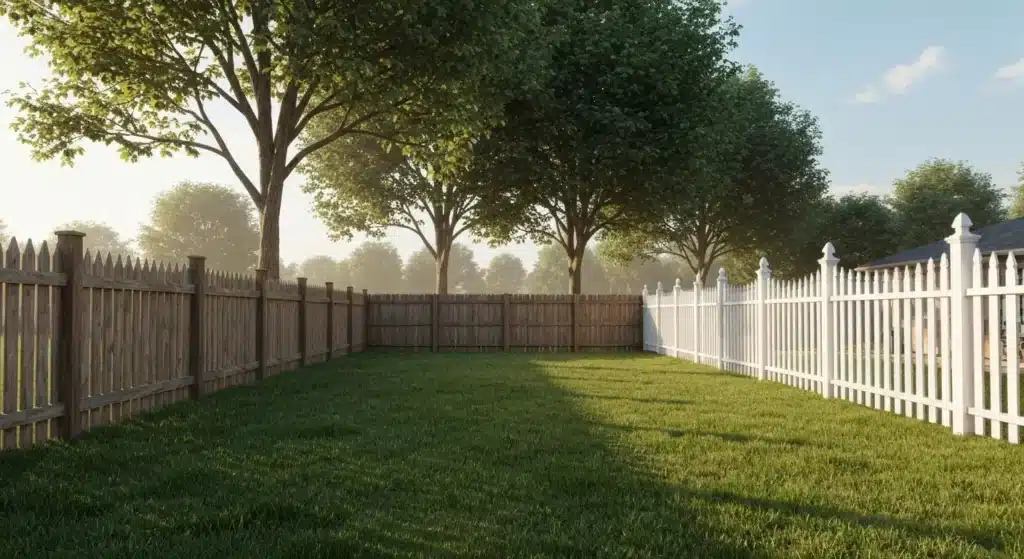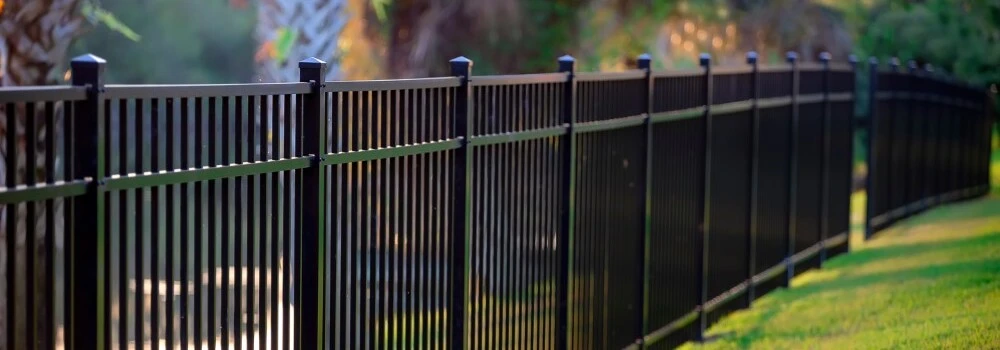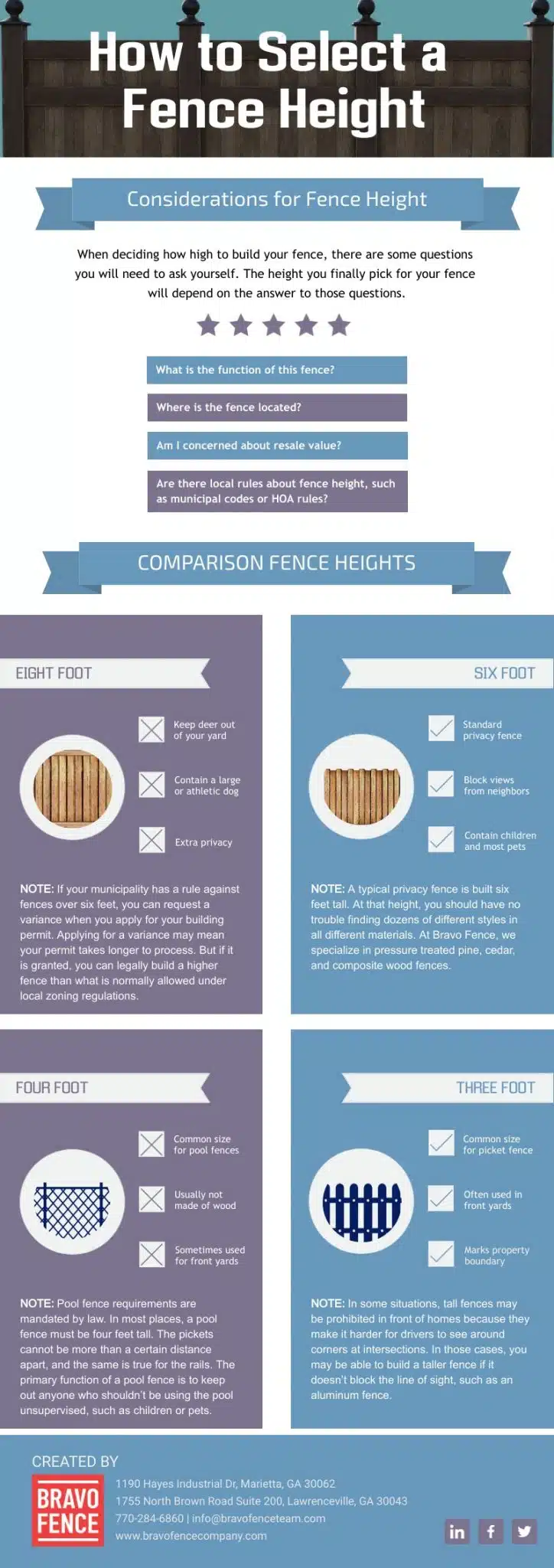
Fence Height Rules: How Tall Should It Be?
Key Highlights
- Standard fence heights vary based on their purpose, but the standard privacy fence height is 6 to 8 feet.
- Local regulations, building codes, and HOA rules dictate the maximum fence height requirements for any fence installation.
- Front yard fencing is usually shorter, limited to 3-4 feet, while backyard fences can be much taller.
- Special fence height restrictions apply to features like pool fences, which often have a minimum height requirement for safety.
- Always check with your local planning department before building to ensure your plans comply with the law.
Introduction
When installing a new fence, height is more than a design choice.
The right fence height can improve privacy, boost security, meet neighborhood guidelines, and even enhance your home’s value, but only if you follow the rules. Between local building codes, HOA restrictions, and safety regulations, understanding what’s allowed (and what isn’t) is essential before you start digging post holes.
Whether you’re planning a brand-new installation or modifying an existing fence, Bravo Fence Company is here to guide you every step of the way with trusted advice and expert service.
Let’s take a closer look at how tall your fence should be and how to ensure it’s both beautiful and compliant.
Fence Height Requirements: Codes, Permits, and HOA Rules
Before you start building, it’s crucial to understand the fence height requirements that govern residential areas. Regulations are set locally, meaning there isn’t a single national standard. Your city or county planning department enforces these codes and issues permits.
You should always check with your local building department and homeowners association (HOA) for specific rules. Some areas allow a 6-foot fence without a permit, while others have different limits or require a permit regardless of standard fence height. Getting this information first prevents costly fines and the potential need to rebuild your fence.
Fence Height Restrictions: Setbacks, Sightlines, and Easements
Beyond just the maximum height, other fence height restrictions can influence your fence installation. Setbacks determine how far your fence must be from property lines, sidewalks, and roads. You also need to consider sightlines, especially on corner lots. For safety reasons, fences in these areas can’t block the view of drivers and pedestrians.
Easements are another factor; you cannot build a fence over a utility easement. Finding the appropriate fence dimensions and placement means balancing your needs with these vital community safety rules. The top of the fence must comply with all these local ordinances to be considered legal.
Fence Dimensions by Material: Wood, Vinyl, Chain Link, Aluminum
The material you choose for your fence often corresponds to a range of typical fence heights. Wood fences are incredibly versatile, commonly available in 6-foot panels for privacy or shorter 3 to 4-foot picket styles. Similarly, vinyl is a popular choice for these exact standard fence height dimensions, offering a low-maintenance alternative.
Chain link and aluminum fences offer different balances of security and visibility. Chain link is a cost-effective option typically found in residential settings, with heights from 3 to 6 feet. Aluminum fences, known for their decorative appeal, are also standard in heights ranging from 4 to 6 feet. Generally, a taller fence made from any material will increase the installation cost due to the need for more materials and labor.
| Fence Material | Common Residential Heights |
| Wood | 3 ft, 4 ft, 6 ft, 8 ft |
| Vinyl | 4 ft, 6 ft, 8 ft |
| Chain Link | 3 ft, 4 ft, 5 ft, 6 ft |
| Aluminum | 4 ft, 5 ft, 6 ft |
Front Yard vs Backyard: What Height Is Allowed?
You’ll find that fence height requirements are almost always different for your front and backyards. In most residential areas, front yard fencing has a much lower maximum height, typically between 3 and 4 feet. This typical fence height is intentional for several key reasons:
- Preserving sightlines for drivers and pedestrians.
- Maintaining community aesthetic standards.
- Creating a decorative boundary, not a privacy barrier.
- Ensuring emergency services have a clear view of the home.
In contrast, backyard fences are where you can aim for more height. A standard privacy fence height is 6 feet, and in some locations, you may even be allowed to build up to 8 feet, often with a special permit.
How to Choose the Right Height for Privacy, Pets, and Security
Choosing the right fence starts with defining its purpose. Are you looking for seclusion, trying to keep a pet safely contained, or boosting your home’s security? Your goal will determine the standard fence height you should select.
- Privacy: 6 to 8 feet is ideal, which is the standard height of a privacy fence in most areas.
- Security: A 6-foot or taller fence is a strong deterrent.
- Pets: 4 feet for small pets, 6 feet for larger dog breeds.
- Decoration: 3 to 4 feet is usually sufficient.
Thinking about your primary goal will help you select a functional and compliant fence that complies with local rules.
Raising an Existing Fence: Legal Ways to Add Height
What if you already have a fence, but it’s not tall enough? You can often add height to an existing fence, but you must do it legally. Adding a decorative lattice topper is a popular and often permissible way to gain an extra foot or two of height. These extensions can be a cost-effective alternative to building a new fence.
However, before you add anything, check your fence height restrictions. Even if your neighbor agrees to a taller fence, their approval doesn’t override the law. Exceeding the maximum standard fence height without a permit can lead to fines or an order to remove the extension. Always consult your city’s planning department to ensure your project is compliant.
Measuring Correctly: Grade Changes and True Fence Dimensions
Accurate measuring is essential for staying within legal limits when it comes to fence dimensions. If your property isn’t perfectly flat, grade changes can complicate things. Local codes have specific ways of defining typical fence height, so measuring correctly from the start is important.
- Start your measurement from the ground level at the base of the fence.
- On uneven terrain, measure from the highest point of the ground under that section.
- Measure to the top of the fence structure (the highest board or panel).
- Do not include decorative post caps unless your local code requires them.
By following these guidelines, you can be confident that you have a true measurement of your fence’s height.
Conclusion
Choosing the right fence height isn’t just about looks; it’s about balancing privacy, safety, and local compliance. Whether you’re fencing in a backyard for peace, adding a decorative touch to your front yard, or securing a pool area, knowing the legal and practical height limits helps you avoid costly mistakes. Every city, HOA, and property line has its own rules, and understanding those guidelines ensures your new or modified fence adds value instead of creating headaches.
From material types to measuring tips, you can now make confident decisions about your fencing project. But if you still have questions or want help navigating local codes, you don’t have to do it alone. At Bravo Fence Company, we make the process simple, stress-free, and fully customized to your needs.
Call us today at (770) 966-9970 or complete our online form to schedule your free consultation.
Frequently Asked Questions
Can I build a taller fence if my neighbor agrees?
While your neighbor’s approval is helpful, it doesn’t override local fence height restrictions. You must obtain a permit or variance from your local planning department to build above the typical fence height legally.
What is the minimum height for a pool fence in Atlanta?
For safety reasons, most municipalities require a pool fence to be at least 4 feet tall. However, Atlanta may have additional specific requirements. It’s best to check directly with the local building department to confirm fence height requirements.
Does fence height impact home value or curb appeal?
The proper standard fence height can boost home value and curb appeal. A well-designed fence that provides privacy and security is often a significant selling point.
How do local building codes influence fence height requirements?
Local codes dictate the fence height restrictions in your area. To maintain safety and aesthetics, they specify maximum fence dimensions for front yards and backyards.
Are there different fence height rules for front yards versus backyards?
Yes, front yards typically only have 3 to 4 feet of fence, while backyards allow taller fences, usually a standard privacy fence height of 6 feet.


